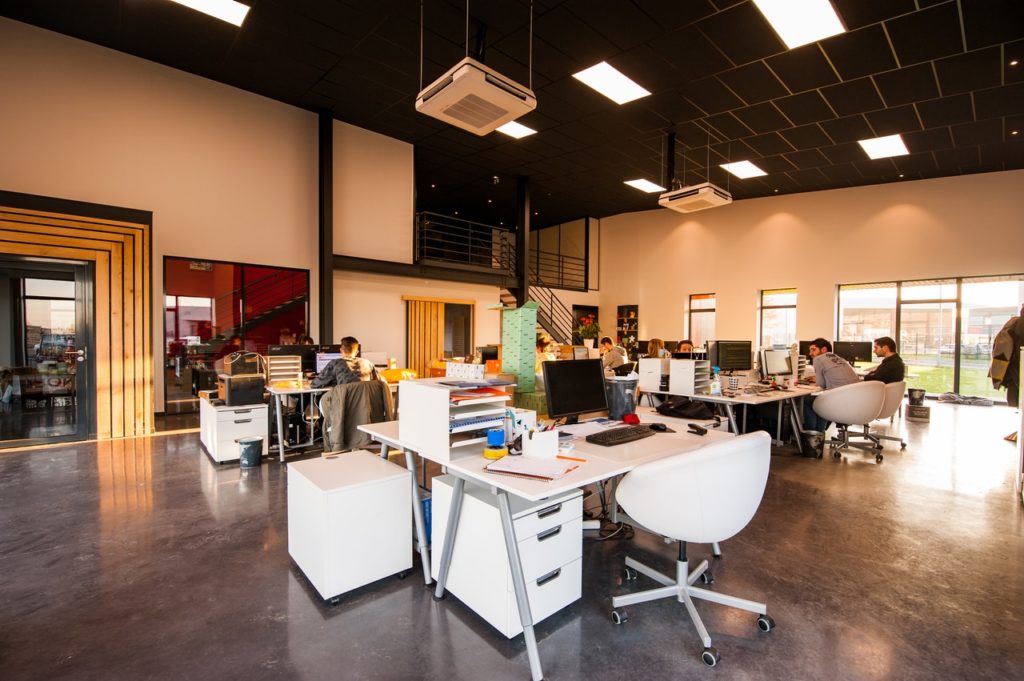Office relocations can get really complicated. If you’ve tried moving to a new home, office moving is two times the difficulty. It can start exciting, but when everyone starts losing important items and the pressure increases, all feelings of excitement will quickly fade away. The panic sets in when planning the office move and organizing everything in the new, shiny office.
An office relocation is not just about moving all the stuff. It also involves adjustment periods, reorganization, transitional workflows, and, most of all, employee happiness. But apart from all these crazy hurdles, office moving means the business is expanding, a brand-new office, and plenty of areas to start over.
When moving the office in an old-fashioned way, relocation can bring chaos for every worker involved. But aside from seeking the help of a corporate mover, a few move management strategies can make things smoother. So before you make the big move, here are the three key strategies to make your company relocation easier and stress-free.
Collecting occupancy information
For those who have experienced a business relocation before, you likely understand the struggle in getting occupancy data from business units. Everyone is busy with work and doesn’t have the time to answer queries. The worst case is when they choose to withhold the right information.
Without a workplace management system to help you in your relocation, you will likely get stuck with time-consuming tasks, such as dealing with endless spreadsheets and manual audits. You also have to identify the vacant space available, the amount of space each business unit needs, and assigning areas for each team. These factors can make a relocation plan fraught with several errors by depending on unreliable data.
The best way to obtain occupancy information is to use the company relocation as the ideal excuse to encourage business units to give accurate occupancy data. This way, employees will know what they will get from it. Stakeholders can also ensure everyone is part of the relocation plan and every team gets the space they deserve in the new location.
While collecting occupancy data, take time to gather other information for future relocation. These include documenting first aid facilities, conducting an IT audit, and identifying the fire warden.
Data storing
When doing an office relocation the old-fashioned way, you will notice employees carrying around clipboards while entering all the data they can get in their spreadsheets. Afterward, you end up dealing with heaping spreadsheets that still require manual auditing before you can use the information in moving and storing data. Of course, there will always be employees who will attempt to change it now and then.
The sad thing about manual auditing is that almost all data and spreadsheets will end up in the trash bin. Instead of doing the manual process, it is about time to adopt smarter data storage management. Instead of using spreadsheets, using modern technology for the office relocation process is more efficient and smoother.
Workplace management applications help businesses obtain and store occupancy data within a central data storage, integrating all enterprise systems. These include the intranet, human resources, finance, and other facility management systems in the workplace. The best software applications have cloud-based systems for faster and cost-efficient implementation.
Even employees per business unit can access the system by entering their information. This way, updates will be easier, giving an accurate and detailed source of occupancy information. Once the company relocation is done, every information remains accessible for other uses, and you can also use it for future relocation plans.

Automated communication
Maintaining good communication flow is one of the secrets to minimize problems during a company relocation. Having everyone involved and communicating early can make a great impact on the office move. Sometimes, communication can also lead to a few mistakes by failing to send emails to a few employees, forgetting to include critical details, and running out of time to disseminate the right information.
A better way to save time is to draft an email template months before the relocation, so you have extra time to plan the information to send to employees or the business units. Email websites come with automation tools to plan the schedule for each email. For the content, make sure to include the date of moving, packaging instructions, a map of the new location, activities to do on moving day, and what to do when an issue arises. After the relocation, the company can still use the tool to ensure everyone knows where to get assistance if they experience problems with the move.
Managing an office relocation for a growing business can feel confusing and overwhelming. But with the right tools, preparation, and strategy, the moving process is less challenging than you think.





